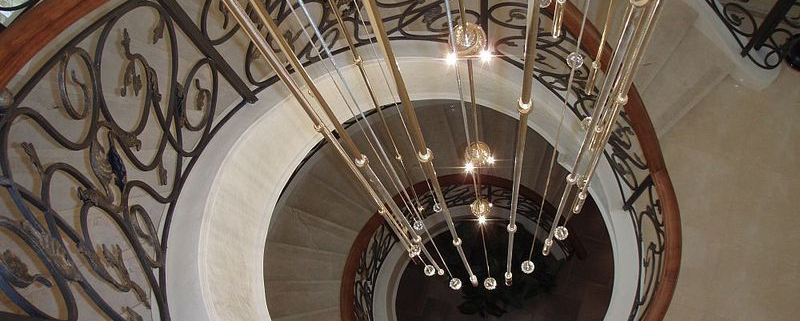Tile panels in the kitchen
The tile panel in the kitchen is laid out either from a variety of small tiles, or one large one. In any case, it is designed to decorate and diversify the room, because the tiles in the kitchen are usually almost plain. The tile panel is laid out in a prominent place, as it is the main element of the decor.
For the panel, you need to prepare a flat surface. All irregularities are smoothed out with cement-sand mortar or putty. If the wall is not prepared at all, it is leveled with cement-sand plaster. The prepared section of the wall must be degreased and all foreign bodies and residues of solutions must be removed. Also, the wall should be dry. For the best setting, the surface is primed with a deep penetration primer.
Before laying out a panel of tiles on the wall, it is better to first fold it on the floor or other surface and align it along the lines of the drawing. Then, after inspection and preparation of the wall, the panels can be laid out in place. It is better to start from the middle of the row so that it is symmetrical.
Tile panels in the kitchen it is better not to put it on a cement-sand mortar, but on mastic (adhesive mass). You can mix the glue with a cement-sand solution, but it is not recommended to do this, since in winter, with severe frosts, the panel tiles can simply fall off.
Tile panels in the kitchen
For laying on the wall, a small amount of glue is first applied with a spatula (with an even edge). Then the glue is leveled on the surface using the serrated edge of the spatula to form identical ridges. In order for the glue to grip as well as possible, the layer must be at least 2.5 millimeters thick. If the back side of the tile on the panel is uneven, then a small amount of glue is applied to the tile itself before laying. This avoids the formation of voids.
It is not necessary to apply glue immediately to the entire surface where the panel will be. The glue will dry out pretty quickly and a crust will appear on its surface. Because of this, it will be necessary, at best, to level the surface again with a serrated spatula, or even to clean the wall and re-smear with glue. Therefore, it is better to cover the wall with glue and lay out the panels in small pieces.
Immediately after laying, excess glue must be removed. If the glue dries, it will significantly complicate the grouting of the seams. In addition, the grout layer on the uncleaned seams turns out to be much thinner and can crack badly over time, and lumps of glue make the panel unattractive. Another soft glue is easily removed with a knife.
The tile panel in the kitchen looks good and makes the room more cozy. And if there is some minor defect in the tile on the walls, the bright picture of the panel immediately turns all attention to itself.



Leave a Reply
Want to join the discussion?Feel free to contribute!